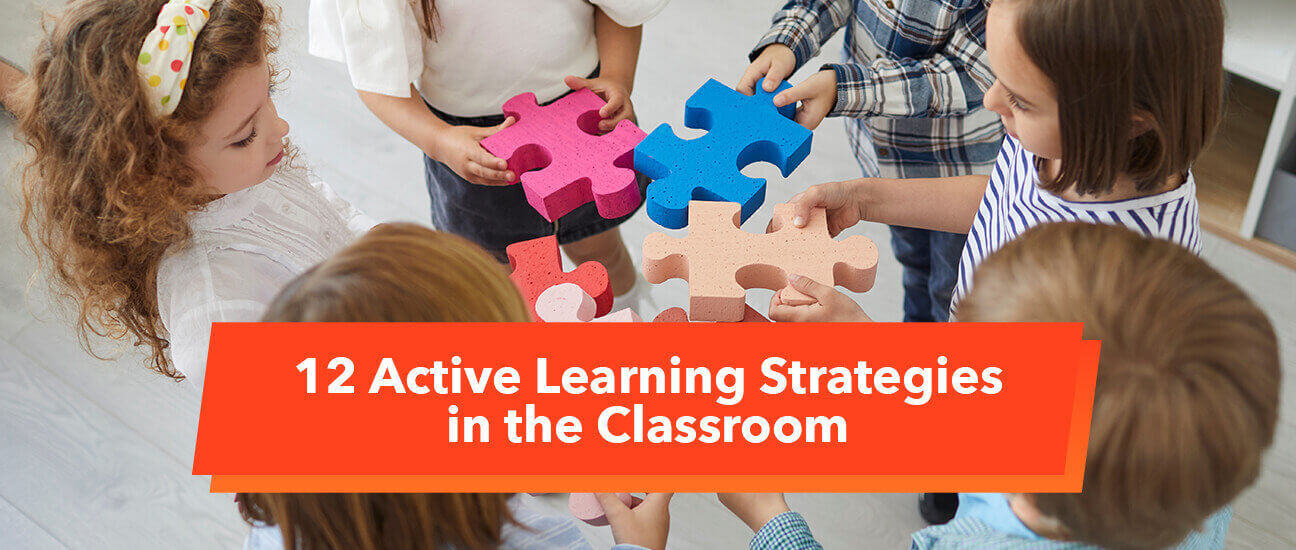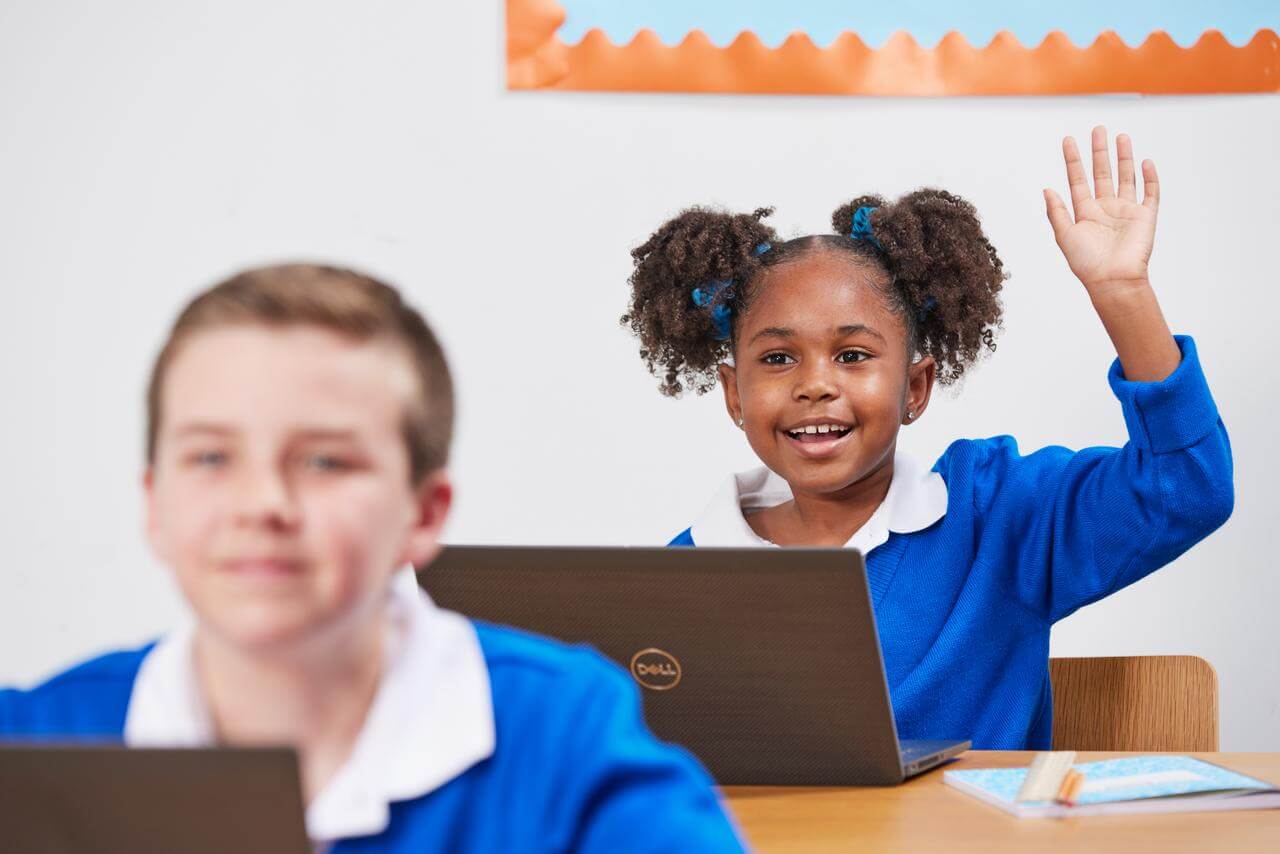Published on June 16th, 2021
12 active learning strategies in the classroom
15 minute read

As a teacher, you always want to keep your students as engaged as possible and inspire them to take an active role in the learning process. However, teacher-centred learning plans aren’t always the best teaching methods to keep students engrossed in their learning.
Active learning strategies are an excellent way to keep your students inspired and engaged in the topic you’re teaching as they empower and stimulate a classroom by putting students at the centre of the learning process.
Throughout this blog, we’re going to deep dive into what active learning involves, what the benefits of active learning strategies in the classroom are and provide you with examples of active learning strategies, including those you can use with interactive whiteboards, that you can implement in your classroom right away.
Jump to section:
The benefits of employing active learning strategies in the classroom
12 examples of active learning methods you can start using today
What is active learning?
In short, active learning is the involvement of the student directly in the learning process. More responsibility falls on the student through a number of means, including collaboration with the teacher and classmates.
Active learning provides a deeper and more interesting learning experience as it uses activities such as reading, writing, discussion, or problem-solving to promote analysis, synthesis, and evaluation of class content. It also provides students with the opportunity to give feedback on how well they have understood the topics being taught to them to identify problem areas in a child’s knowledge and understanding.
It’s commonly known that students’ attention will waiver every 12-20 minutes, so by utilising active learning strategies throughout your teaching plan you should be able to keep your students more engaged with the topic you’re teaching to the class.
The benefits of employing active learning strategies in the classroom
There are several benefits to employing active learning strategies in the classroom that aid the development of students in a variety of age groups active learning approaches:
- Create lifelong learners – These strategies help students to become lifelong learners as it promotes learning to be not only about the content but also about the process in which a student learns.
- Provide students with greater control over their learning – increased involvement helps engage students and gives them skills they can use later in life, once they’ve left school and college.
- Encourage students to stay focused on their learning – when a student is involved in the learning, rather than just passively sitting and listening, they’re more likely to stay focused.
- Improve a student’s enthusiasm for their studies – encourage students to get involved with active learning and they’re more likely to get excited about their studies or a particular subject matter.
- Make a topic more intellectually exciting – when a student applies active learning methods to a topic it gives them the opportunity to get truly excited about the subject.
- Allow students to participate at a higher level of academic discussion – offering students a better opportunity for deeper analysis, critical thinking and evaluation of a topic.
- Provide unparalleled support and a more rounded education – your students can support each other, so it doesn’t just fall on the teacher. They’ll pick up other skills and dive deeper into topics, enabling for a more rounded learning environment.
- Prepare students of any age for future employment – active learning techniques can be a good way of blending skills that will be useful for them in the workplace. By integrating activities such as case studies and problem-based learning scenarios into your teaching, it provides the opportunity for students to practice skills that are essential for the workplace.
- Improve collaboration – whether it’s simply more class discussion or student generated test questions, active learning inspires a large increase in overall collaboration between students.
12 examples of active learning techniques you can start using today
If you want to promote active learning in your school, college or classroom, you’ll need to equip yourself with a number of ways to weave it into your lessons. To help you get started, or provide you with new inspiration, we’ve pulled together 12 examples of active learning methods and techniques that you can implement with your class today.
1. Think pair share
Think pair share is a great learning strategy to develop thinking skills and engage in group work. It works by providing pupils with a prompt or question and giving them time to respond to it independently by jotting down their ideas. After a set amount of time, children then share their responses with a partner for five to twelve minutes, discussing similarities and differences. Finally, each pair feeds back their ideas to the class to facilitate a whole group discussion.
It’s important you listen to student responses and ask them to elaborate on their thinking by providing explanations, evidence, or clarifications. Try to stay neutral in your reaction to students’ comments to allow them to come up with their own evaluations of the topic. You can also invite others to react and respond to ideas by providing alternative viewpoints, agreements or disagreements.
2. One sentence summary
This learning strategy allows students to use high order thinking skills to condense their learning into one sentence and requires learners to engage with language at a high level. This could be done at the end of a lesson to give students a few minutes to summarise their learning and improve memory.
3. Role play
Role-playing can be used to help improve children’s confidence and encourage collaborative learning. A typical role-playing exercise would see students taking on the role of a character in a particular situation, encouraging them to solve problems using approaches and skills relevant to that situation.
You can use role-play in a variety of subjects, for example, in science, you could ask them to role-play a scientific process such as the life cycle of a plant while in history, they could take on the role of a key character to play out the events of the time.
4. Just in time teaching
A method of active learning that uses a blend of class discussion, collaboration and individual learning. Your students will be set a task, usually reading, to do outside of the classroom in their own time. They’ll then have to respond to a series of short questions, whether that’s online or in writing on a worksheet. Once they’ve done this you can create a number of group exercises based on the work and their answers in the classroom, where students will have to cooperate.
5. The muddiest point
In this activity, you ask children to reflect on the part of a lesson they found the most unclear or confusing. If you have an interactive whiteboard display, such as the ActivPanel interactive display, you could get children to write or indicate on the whiteboard the topics they are most unclear about. This will allow them to reflect on their learning on the topic in question while also providing excellent feedback for teachers who can tailor future lessons to tackle the issues arising across the class.
6. Three-step interviews
A cooperative learning strategy, the three-step interview encourages students to develop active listening skills by quizzing one another, sharing their thoughts and taking notes. Children work in groups of three, taking on the roles of the interviewer, interviewee and notetaker.
Assign the class a theme or topics of discussion and then give children five minutes to interview each other about the key information relating to the topic in question. After the time has passed, get the children to rotate roles. This allows children to apply different questioning strategies, reflect on their understanding of the topic and collaborate in their groups as they take on each role.
7. Game-based learning
With children growing up in a fast-paced digital age, game-based learning is a great way to tap into their digital skills. Lesson teaching software drives student engagement and brings lessons to life with creative resources to use in the classroom.
8. Minute paper
Much like the One Sentence Summary activity, Minute Paper is best done towards the end of a teaching session. Ask students to consider what is the most important thing they learnt today, and which thing is the least clear. During the next lesson, discuss the issues students found less clear to aid their understanding. This provides students with the opportunity to actively think about what they have learned, as well as providing feedback about areas that may need covering differently.
9. Fish bowl
To encourage participation by all students, a fish bowl is a good approach for discussing dilemmas or debates. Some of the students sit in an inner circle (the fish bowl) and the others are around the edge observing the discussion.
Allow the students in the inner circle a time to prepare ideas and questions in advance, while you brief the students who are observing what they should be listening for. The idea is that the participants in the inner circle are more likely to get involved than they would if it was a large group discussion, and the students observing learn from their peers.
10. Problem-based learning
Problem-based learning reverses the ‘traditional’ teaching approach: students are provided with a problem to solve, and then have to work out which learning and research they need to engage with to solve the problem. This activity works best in group settings and creates individual learning paths as each group and student learns independently.
11. The pause procedure
This is a great way to promote active learning in your classroom even when you’re focusing primarily on passive learning. Every 12-15 minutes of your class, when you’ve been dicatating or sharing videos, you should ‘pause’ for two to three minutes. In this time you should encourage students to share their notes in pairs, giving them a chance to talk about what they’ve learnt, rework their notes or ask any questions they have.
12. Posters & gallery walk
Another group activity you can engage your students in is a poster and gallery walk. Give groups of students an assignment that they need to work on together and present their ideas on a sheet of chart paper. Once they have completed their poster, have them display it on the wall around the classroom. One of their group will stay with the poster and help to explain it as the class circulates to look at all of the posters.
Students take turns standing by their poster so each of them has the chance to visit the other groups’ posters. You could also get students to feedback on what they learnt from other groups’ posters to further their understanding of other topics.
Get the most out of your class with interactive whiteboards and software
Whatever way you want to teach your students, keeping them involved in the process is important. When your students come to a classroom and feel like an active participant, it’s only going to help. Promethean creates world leading interactive whiteboards designed with the classroom in mind. Not only that, but we set the standard on educational software for interactive whiteboards, to help you get the most out of your smart technology.
Interested in learning more? Visit the virtual demo page to request a live demo of the Promethean interactive display




